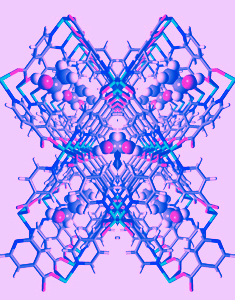Locals set CCS record
 Australian researchers have set a record for carbon dioxide capture and storage (CCS) using a high-tech sponge filled with tiny magnets.
Australian researchers have set a record for carbon dioxide capture and storage (CCS) using a high-tech sponge filled with tiny magnets.
Researchers from Monash University and the CSIRO made the breakthrough using a Metal Organic Framework (MOF) nanocomposite - a sponge-like technology that can capture carbon dioxide from a number of sources, even directly from air.
The magnetic sponge removes carbon dioxide using the same technique as induction cooktops, and is able to do so using one-third of the energy than any other reported method.
MOFs are a class of compounds consisting of metal ions that form a crystalline material with the largest surface area of any material known. In fact, MOFs are so porous that they can fit the entire surface of a football field in a teaspoon.
This technology makes it possible to store, separate, release or protect valuable commodities, enabling companies to develop high value products.
“Global concerns on the rising level of greenhouse gas emissions and the associated environmental impact has led to renewed calls for emissions reduction and the development of green and renewable alternative energy sources,” said lead researcher Associate Professor Matthew Hill.
“However, existing commercial carbon capture technologies use amines like monoethanolamine, which is highly corrosive, energy intensive and captures a limited amount of carbon from the atmosphere.
“Our research shows the lowest reported regeneration energy calculated for any solid porous adsorbent, including monoethanolamine, piperazine and other amines. This makes it a cheap method that can be paired with renewable solar energy to capture excess carbon dioxide from the atmosphere.
“Essentially, we can capture CO2 from anywhere. Our current focus is for capture directly from the air in what are known as negative emissions technologies.”







 Print
Print